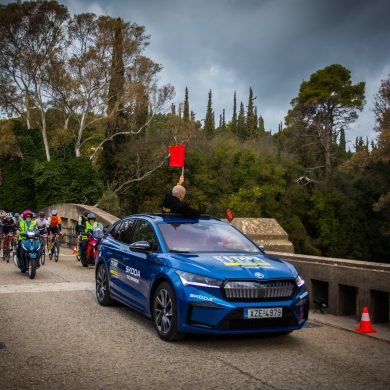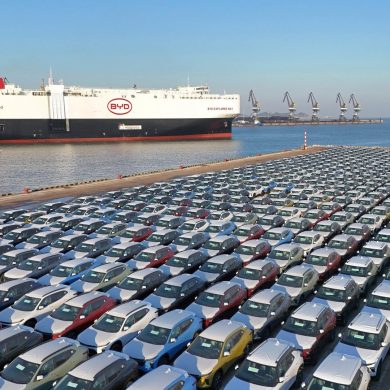
Nissan is not preparing answers to the important questions that arise from the spread of electrification, such as what to do with used car batteries. It already has them ready, as it plans to connect electric cars to homes, businesses and electricity grids, thereby developing new ways of reusing batteries.
Nissan Energy Vision. Hold those words. It's Nissan's energy vision for the future that's fast approaching. But what does it include? The Japanese brand envisions making electric vehicles even more useful to their owners by introducing convenient new ways to harness the capacity of their batteries to store and distribute energy.
Under the project, called Nissan Energy, owners of Nissan's electric vehicles will be able to easily connect their cars to energy systems to charge their batteries, electrify their homes and businesses, or return energy to the power grids. Nissan will also develop new ways to reuse electric car batteries.
Nissan has already launched similar programs in the U.S., Japan and Europe to create an "ecosystem" around its range of electric vehicles, including the Nissan LEAF, the world's best-selling all-electric car. Nissan Energy comes to bring these initiatives together as part of Nissan's Intelligent Mobility strategy.
"Nissan Energy will allow our customers to use their electric cars for more than just driving. Now they can be used in almost every aspect of their lives," said Executive Vice President Daniele Schillaci, global head of marketing for electric vehicles. "The Nissan Intelligent Mobility vision calls for changing the way cars are integrated into society and Nissan Energy is turning that vision into reality."
Nissan Energy will create new standards for connecting vehicles to energy systems through three key initiatives:
Nissan Energy Supply, Nissan Energy Share and Nissan Energy Storage
Nissan Energy's pioneering initiatives span a number of locations, including Nissan's North American headquarters:
Franklin, Tennessee: Nissan North America will test the use of LEAF vehicles to power its facilities with electricity during peak demand hours in anticipation of significant cost savings.
Hagen, Germany: LEAF vehicles will be used as a "reserve" for the German power grid in a pioneering pilot project involving Nissan, technology company The Mobility House, energy supplier ENERVIE and power transmission system operator Amprion.
Japan: Nissan is working with partners such as electricity and telecommunications companies, conducting real-world testing of vehicle-to-grid (V2G) and virtual power plant (VPP) systems to validate and advance energy management opportunities with electric vehicles.
Nissan Energy Supply: providing the connected charging solutions users need at home, on the road and at their destination
Users of electric vehicles want to charge them at their convenience and usually at home. Nissan's efforts to support its customers include the verification of charging accessories, such as electrical outlets or wallbox systems that can be connected to its electric vehicles (depending on the specifics of the local market).
Away from home, users can use the fast-growing CHAdeMO charging network, one of the world's largest, with more than 22,000 fast charging points.
Finding charging points and connecting to the network is easy and simple, via the LEAF's revised NissanConnect navigation system.
Nissan Energy Share: Working with partners to harness the momentum in energy integration.
The batteries in an electric car can do more than just power the vehicle. They can also serve as mobile energy storage devices. Nissan vehicles already on the road contain more than 10 GWh of combined and "stored" energy potential.
Nissan Energy Share connects vehicles to social infrastructure, allowing them to share high-capacity battery power with a connected home or building. They also allow cars to connect to the local energy grid to act as virtual power stations, delivering vehicle power to the grid and helping to manage energy efficiently. Thanks to these capabilities, users will be able to share battery backup capacity without being deprived of energy for mobility.
Nissan has already conducted Energy Share pilot programs in Japan, the U.S., Europe and other markets in collaboration with various companies and organizations. Once the pilot tests are completed, Nissan will be ready to commercially market these systems.
Vehicle-to-home (V2H): Nissan is working with partners to bring affordable, cost-effective equipment to the market to spread V2H. Using V2H, owners of Nissan electric vehicles can use their cars as a source of power for the household and save money on their electricity bill, or as a backup power source during power outages or emergencies.
Vehicle-to-building (V2B): Like V2H, V2B uses the batteries of electric vehicles, storing energy for buildings and businesses. However, a V2B system can include hundreds of vehicles in order to realize significant cost savings for a company. Full-scale testing of V2B systems has already begun in many countries and Nissan is working with partners to jointly bring these systems to market in 2019.
Vehicle-to-grid (V2G): Nissan has partnered with utility companies and governments to harness the potential of V2G. In trials in Europe, Nissan cars are providing multiple services to the electric grid, helping to balance energy networks and integrate renewable energy. Working with partners, Nissan is piloting ways for customers to earn additional income by distributing energy from their vehicles when not in use, without affecting their mobility needs.
Nissan Energy Storage: Providing a "second life" to an electric vehicle battery.
The battery life of a Nissan electric vehicle does not end after the car's power cycle is complete. The battery can be recycled and renewed for various uses : From powering electric forklifts and generators, to providing power for a stage. As more and more drivers opt for electric vehicles, the availability of used lithium-ion batteries is expected to increase significantly when owners replace them with new ones.






